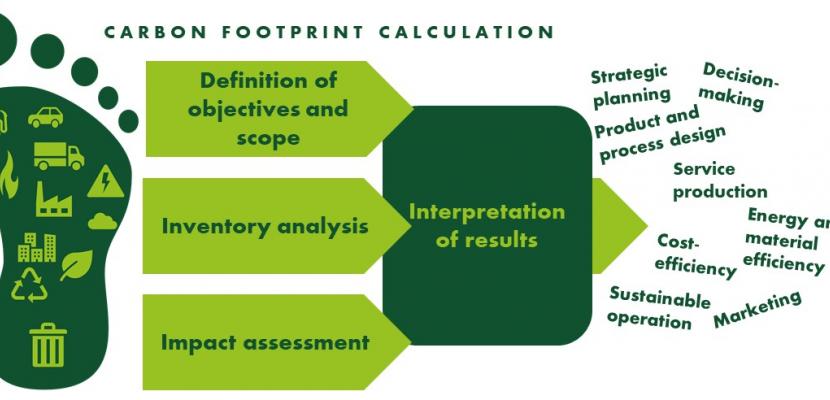
Carbon footprint calculation, Finland

About this good practice
Carbon footprint provides factual and transparent insight on the company’s environmental performance at any given level. It can be calculated for products, services, and organisations. Usually, it refers to a footprint during the lifespan, but the term is also used to describe, for example, annual greenhouse gas emissions on a company level. The footprint contains details on fossil greenhouse gas emissions (CO2, CH4 etc.) that are reported in the form of carbon dioxide equivalents.
The starting point is to map the baseline situation and after that plan the steps forward. GHG Protocol is the most common method for determining the annual operational emissions of organisations and buildings. Yet, there is no patent solution – each organisation must find its own approach that will fit the sectoral or process-specific scope.
The demand for low-carbon actions is coming not only from tightening norms and legislation. Increasingly, customers, financiers and other stakeholders are expecting businesses to take seriously their environmental responsibility. Calculation of carbon footprint enables to identify and analyse emissions, pinpoint possibilities for their reduction, thus enhancing material and energy efficiency of the company. It also enables a solid basis for strategic decision-making and stakeholder communication.
Resources needed
To secure sufficient data, the company must allow sufficient time for their experts who know the operations. SMEs often need extra help for the calculation. In Finland, in addition to private firms, the governmental Motiva offers free advisory. There is also a specific grant available: Energy Aid.
Evidence of success
By calculating the carbon footprint, a company can:
• Get a clear set of parameters for development and monitoring of its performance,
• Identify needs and ideas for business development,
• Communicate reliably to customers on its efforts on responsibility and sustainability,
• Increase the confidence of financiers and investors in the company’s commitment to address the climate change,
• Enhance its sustainable image,
• Improve the energy and material efficiency and
• Save money!
Potential for learning or transfer
Most SMEs need support to start with the carbon footprint. Municipal and regional organisations have a key role in stimulating of local companies. Showcasing the benefits like imago impact and cost savings with clear, not too technical messages are needed.
There are different calculators available by googling but it is hard to understand how to use them or what the results mean. A Finnish example of public efforts to tackle with this is the carbon calculator for tourism industry, published in January 2022.
When thinking of innovation potential, the footprint can be complemented with carbon handprint, a method and approach developed by VTT Technical Research Center of Finland and Lappeenranta University of Technology. The idea is that the company develops products/services that allow its customers to reduce their carbon footprint. Actions addressed to energy efficiency, product lifespan, recyclability etc. have an impact on a product's carbon handprint
Further information
Website
Good practice owner
You can contact the good practice owner below for more detailed information.
City of Heinola
